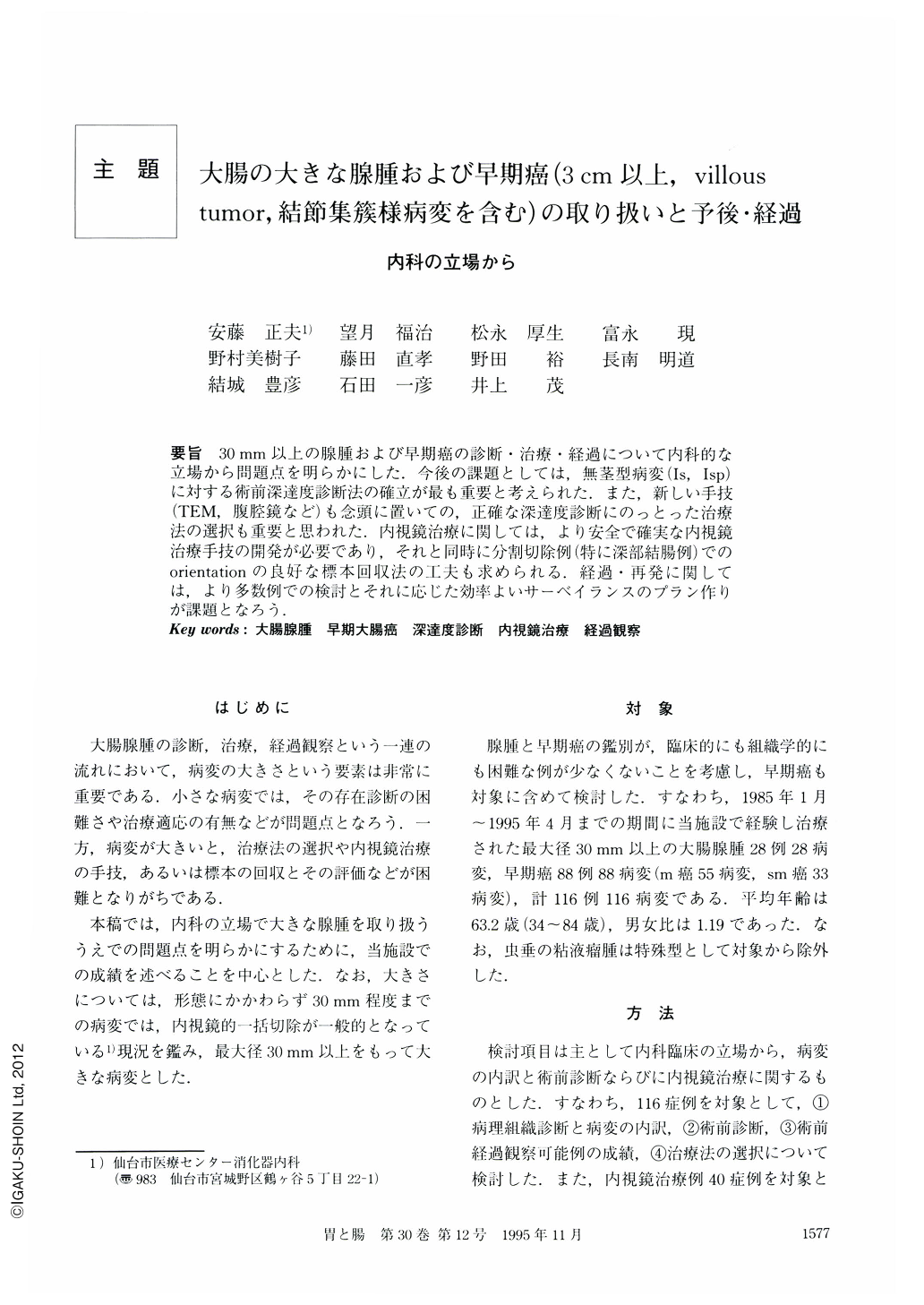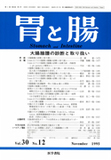Japanese
English
- 有料閲覧
- Abstract 文献概要
- 1ページ目 Look Inside
要旨 30mm以上の腺腫および早期癌の診断・治療・経過について内科的な立場から問題点を明らかにした.今後の課題としては,無茎型病変(Is,Isp)に対する術前深達度診断法の確立が最も重要と考えられた.また,新しい手技(TEM,腹腔鏡など)も念頭に置いての,正確な深達度診断にのっとった治療法の選択も重要と思われた.内視鏡治療に関しては,より安全で確実な内視鏡治療手技の開発が必要であり,それと同時に分割切除例(特に深部結腸例)でのorientationの良好な標本回収法の工夫も求められる.経過・再発に関しては,より多数例での検討とそれに応じた効率よいサーベイランスのプラン作りが課題となろう.
One hundred and sixteen colorectal big tumors(adenoma : 28, early carcinoma : 88, all were over 30 mm in diameter) were studied concerning their clinicopathological characteristics, pre-operative diagnosis, endoscopic therapy, and the follow-up of their courses. The macroscopic types in order of frequency were sessile type, nodule-aggregating type, pedunculated type, flat-elevated type, and the type with distinct depression. Histologically, 75% of the total number had some villous component, and 72% of the cancers were adenomas. Occult blood test was an effective method in order to detect these lesions. Seven cases were retrospectively studied for pre-operative course, and there were 3 cases whose x-ray films were inadequately evaluated, and 2 cases where there was recurrence from residual tumors including a rapidly progressive lesion. The rate of correct pre-operative diagnoses of the depth of invasion by diagnostic imaging was 77%- The rate for the sessile type was 67%, and it was lower than the rate for each of the other types which was more than 80%. In 60 cases in which there was colorectal resection as initial therapy, 68% of them were not more invasive than sm1. Therefore, such operations for these cases were considered excessively invasive. Wedge resection was performed in 16 cases, and we expect that this method will gradually be more frequently used as TEM (transanal endoscopic microsurgery) and laparoscopic surgery become widely adopted. In 40 cases of endoscopic therapy, piecemeal resection was carried out in 22 cases. In the cases of piecemeal resection, the cases whose fragments were all recovered were only 55%, and the wedges of the lesions were histologically negative in only 32% of the cases. We concluded that technical development of divisional resection and accurate evaluation of specimens were the most important subjects for endoscopic therapy. Additional colorectal resection was performed in 13% of the cases because of actual or suspected submucosal invasion. However, we did not find residual tumors and metastases to the lymph nodes. In 23 cases which were followed up after endoscopic ther-apy, recurrence from the residual tumors occurred in 17% of them, and in most of much cases resection and investigation of the specimens proved very difficult.

Copyright © 1995, Igaku-Shoin Ltd. All rights reserved.


